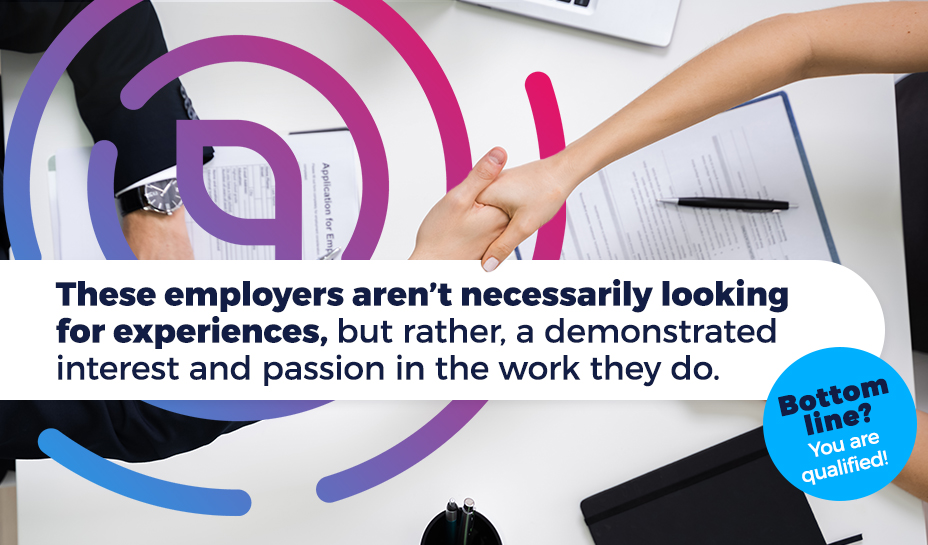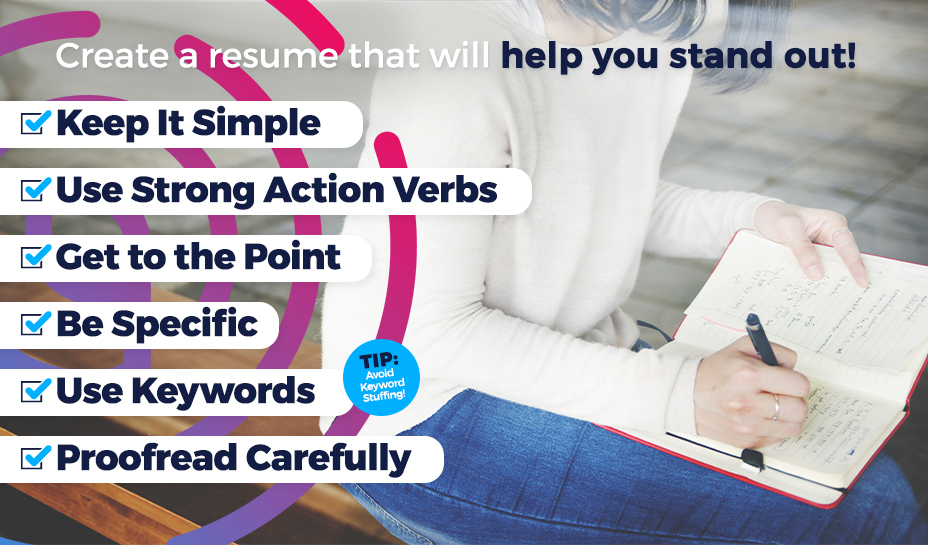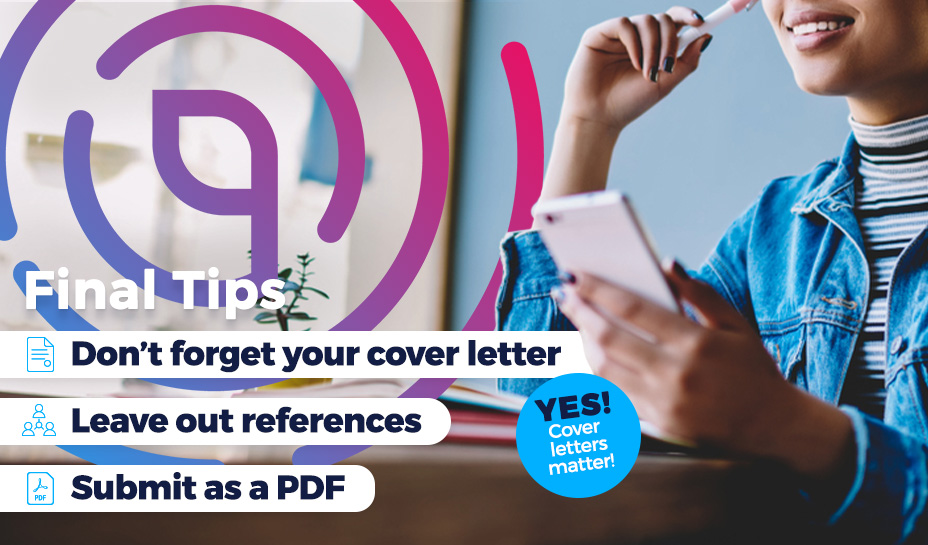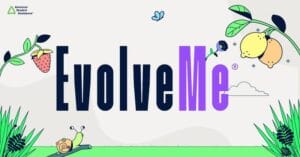Writing a resume for internships is high-key stressful. We mean, let’s face it. There is a lot at stake with that one little piece of paper. The right internship can serve as the launchpad of your career, allowing you to learn industry-relevant skills while expanding your professional network.
And then there’s the stress of figuring out how to fill out a resume for an internship when you don’t have much, if any, experience. Like, does knowing basic Excel functions count as a skill? Is your babysitting gig considered work experience? What about all the TikTok dance challenges you have been absolutely crushing lately? Those are pretty impressive, right?
We know that writing a resume for internships can be super challenging. That’s why we’ve put together a simple guide where we break down the internship resume writing process.
Ready to score the internship of your dreams? Read on to learn how to put together an impressive resume for internships that highlights your skills and achievements.
Applying for Internships: Do You Need to Have Prior Experience?
OK, let’s address the elephant in the room: your limited experience. How do you write a resume when your greatest accomplishment to date has been sinking a three-pointer at the final buzzer when you were in the sixth grade? (NGL, still one of the greatest moments of my life.)
The good news is that you don’t need tons of experience to apply for internships. Sure, there will always be some employers who want to take advantage of cheap labor that they don’t have to train. But many employers (read: the best employers) recruit interns because they want to grow their company’s talent pipeline. These employers aren’t necessarily looking for experiences, but rather, a demonstrated interest and passion in the work they do.

Bottom line? You are qualified!
@jasonrodelo YOU NEED TO HEAR THIS @bigwillsimmons @rexkline #affirmations #vibewithus
Want to work at Google? Apply for Google internships. Dreaming about a career in fashion journalism? Go for that Vogue Magazine internship. As long as your extracurricular activities show a demonstrated interest and passion in the field, you have as good a chance as any to getting the internship of your dreams.
Related: How to Get an Internship
What to Include on a Resume for Internships
OK, so what all do you need to include in a resume for an internship? We’re going to take it section by section and break it all down.
1. Contact Information
Always include your contact information (name, email address, location) at the top of your resume. You don’t need to list your full address — your city and state are enough.
Also, this is a good time to retire that embarrassing email address you’ve been using forever. Asking recruiters to get in touch with you at bigbooty4days@gmail.com doesn’t exactly scream professionalism.

2. Summary Statement (Optional)
Next comes your summary statement, which is simply a brief summary (two or three lines, max) of your qualifications and experience. Some students choose to skip the summary statement so they can make room for more important things on their resume. The choice is up to you.
In general, you should stay away from objective statements. Summary statements are preferable because they focus on the needs of the employer. Check out the sample below:
Objective Statement: I am seeking an internship that will allow me to build experience in the field of programming.
Summary Statement: Detail-oriented software engineering student with an outstanding academic record. Achieved Dean’s list and maintained a GPA of 3.5. Seeking a programming internship at [company name] to utilize my comprehensive understanding of Java 8.
The summary statement sounds much better, right? Here’s one more useful tip: Look at the job description and use similar vocabulary in your summary statement. That way, employers will quickly see that you’re qualified for the job.

3. Education
Since you’re still in school, your education should go above your career-related experiences. This is because students tend to have limited experience, so it makes more sense to draw the employer’s attention to their education.
In this section, you should include the following:
- Name of institution + location
- Degree and intended major
- Expected graduation date
- Study abroad, GPA, honors, relevant coursework — anything that allows you to flex your hard work ethic.
It should look similar to this:
EDUCATION
University of South Carolina, Columbia Expected June 2021
Bachelor of Arts in Economics, GPA 3.6/4.0
Relevant Coursework: Advanced Microeconomic Theory, Industrial Organization and Public Policy, Public Economics
Italy Study Abroad Program: University of South Carolina Arnold School of Public Health September 2018-December 2018

4. Experiences
Now, it’s time to list your career-related experiences. This section will likely make up the bulk of your resume and should include extracurriculars like volunteer work, part-time jobs, student organizations, sports, etc.
When listing your experiences, make sure that you put them in reverse chronological order. This is the most popular resume format and, in general, the one that will make your internship resume the most impactful.
A reverse chronological resume includes your career-related experience history beginning with the most recent and working its way backward. Here’s what it looks like:
EXPERIENCE
Molecular Biology Internship
UC Davis School of Veterinary MedicineJuly 2019-Present
- Core responsibilities #1
- Core responsibilities #2
- Core responsibilities #3
Assistant Dog Groomer
Wagging Tails Grooming Salon April 2016-August 2018
- Core responsibilities #1
- Core responsibilities #2
- Core responsibilities #3
Animal Shelter Volunteer
Southwest Humane Society October 2012-April 2016
- Core responsibilities #1
- Core responsibilities #2
- Core responsibilities #3
5. Skills
The skills section is nothing fancy. This section typically goes at the bottom of your resume and includes any skills that may be relevant to the position you’re applying for.
For example, if you’re applying for a programming internship, you might list Java and HTML as relevant skills. This section can also include interpersonal skills (aka, soft skills) such as leadership, multi-tasking, etc.
If you’re cutting it close on space, consider leaving out “proficient in Microsoft Word” and similarly basic skills. Not trying to call you basic or anything! But as a Gen Zer, many employers kinda expect you to know your way around a computer.

How to Write a Resume for Internships: General Tips and Advice
So, how do you build an internship resume that a) demonstrates your interest in the company/industry you’re applying for and b) tells a unique story? Here is our best advice for creating a resume that will help you stand out in a sea of internship applications.
1. Keep It Simple
Unless you’re applying for a graphic design internship or something similarly creative, it’s best to keep your resume layout simple. Stick with an easy-to-read font like Times New Roman or Arial (10-12 point) and use clearly marked sections and headers.
Be sure to leave plenty of white space. Do not cram every experience you’ve ever had onto your resume. Remember: You’re trying to tell a story with carefully-chosen experiences.
2. Use Strong Action Verbs
When filling out your information for each work experience, use easy-to-skim bullet point statements to help explain your responsibilities and accomplishments. Start each bullet point with a compelling action verb.
For instance, let’s say that you want to highlight a capstone project that you completed for your class. Here is an example of how you might use action verbs (bolded below) to kick off each bullet point:
Marketing Projects
Marketing Campaign for Smith’s Family Insurance – Cincinnati, OH October 2019
- Surveyed 150 families in Cincinnati to collect detailed data on client’s target audience.
- Developed and implemented a cost-effective marketing plan for local insurance company that leveraged social media and offline marketing techniques.
- Created a campaign budget of $1,200 which we estimated to be the minimum cost that would yield the highest return on investment (ROI).
Need some ideas for your resume? Here is a list of action verbs to get you started.

3. Get to the Point
Your internship resume should be no more than one page. Seriously, keep it short and sweet. This forces you to be concise and make every word count.
Besides, most hiring managers spend all of 7.4 seconds looking at your resume. They’re probably not going to bother looking at the second page unless the first is extremely compelling. And TBH, most entry-level candidates don’t have enough experience to warrant a second page anyway.
4. Be Specific
Too often, resumes for internships have vague descriptions like “utilized advanced computer skills to improve company’s website.” Like, what does “advanced computer skills” even mean? Is it programming? Managing servers? Try to be more precise.
On a similar note, you should describe the task and its impact. How did your work on a specific project impact the organization and/or its customers?
When writing your bullet statements, try to follow this formula: Action verb + task + result statement. For example:
Marketing Capstone Project
-
- Increased voting participation by 25% in a student election by advertising the election on Facebook and Twitter.
Here’s another:
Senior Camp Counselor
-
- Implemented a three-step conflict resolution program for 15+ unruly children that resulted in a 20% decrease in unwanted behavior.
5. Use Keywords (But Avoid Keyword Stuffing!)
When writing a resume for internships, you need to write it for both human readers and computerized resume scanners. Companies that receive a lot of internship/job applications often use application tracking software (ATS) systems to simplify the process.
Long story short, these computerized resume scanners are looking for keywords in your resume that indicate whether or not you’re a qualified candidate. So, what does that mean for you? It means that you need to pull up the job description and carefully pepper in the most likely keywords to make it past the robots.
Obviously, you shouldn’t lie on your resume. If you can’t code your way out of a paper bag, don’t try to insert words like “proficient in C++” or whatever. When tailoring your resume to fit the position, stick to the truth.
You also shouldn’t stuff your resume with keywords. Remember that if you make it past the robot, a human will be reading your resume next. Make sure that it’s both human and robot-friendly.
6. Proofread Carefully
Here’s a fun thing to do this Halloween: Read resume horror stories in which the applicant didn’t proofread his or her resume before submitting their application. Seriously, typos can kill your chances of getting a callback. Don’t let your resume get tossed in the “no” pile just because you spelled “manager” as “manger.”
Proofread your stuff not once, not twice, but THREE times. Additionally, don’t be afraid to ask someone to look over your resume. Resume advice can vary depending on your industry and circumstances, so try to get someone who is familiar with both. If nothing else, pop down to your college’s career center and get a professional to look at it for you.

Final Tips
You’ve finally finished up your resume. Nice one! Before you send it off, make sure that your bases are covered with these final tips:
- Don’t forget your cover letter. Yes, cover letters matter! We wrote a detailed guide on how to write a cover letter for internships, so check it out and flex that awesome personality of yours on your CV.
- Leave out references. You don’t need these unless the employer specifically asks for them. If references are requested, be sure to create a separate document for your reference list.
- Submit as a PDF. When you’re ready to submit your resume, opt for a PDF version instead of a Word document. A PDF is more likely to preserve the formatting of your resume when your employer opens it.
And that’s it! Whether you’re applying for a remote internship or a traditional internship, a strong resume can be your ticket to an amazing career opportunity. Now, go forth, and make your resume shine!
Image Sources
Source: Rawpixel.com / Shutterstock.com
Source: fizkes / Shutterstock.com
Source: Andrey_Popov / Shutterstock.com
Source: GaudiLab / Shutterstock.com
Source: pixelheadphoto digitalskillet / Shutterstock.com
Source: industryviews / Shutterstock.com




